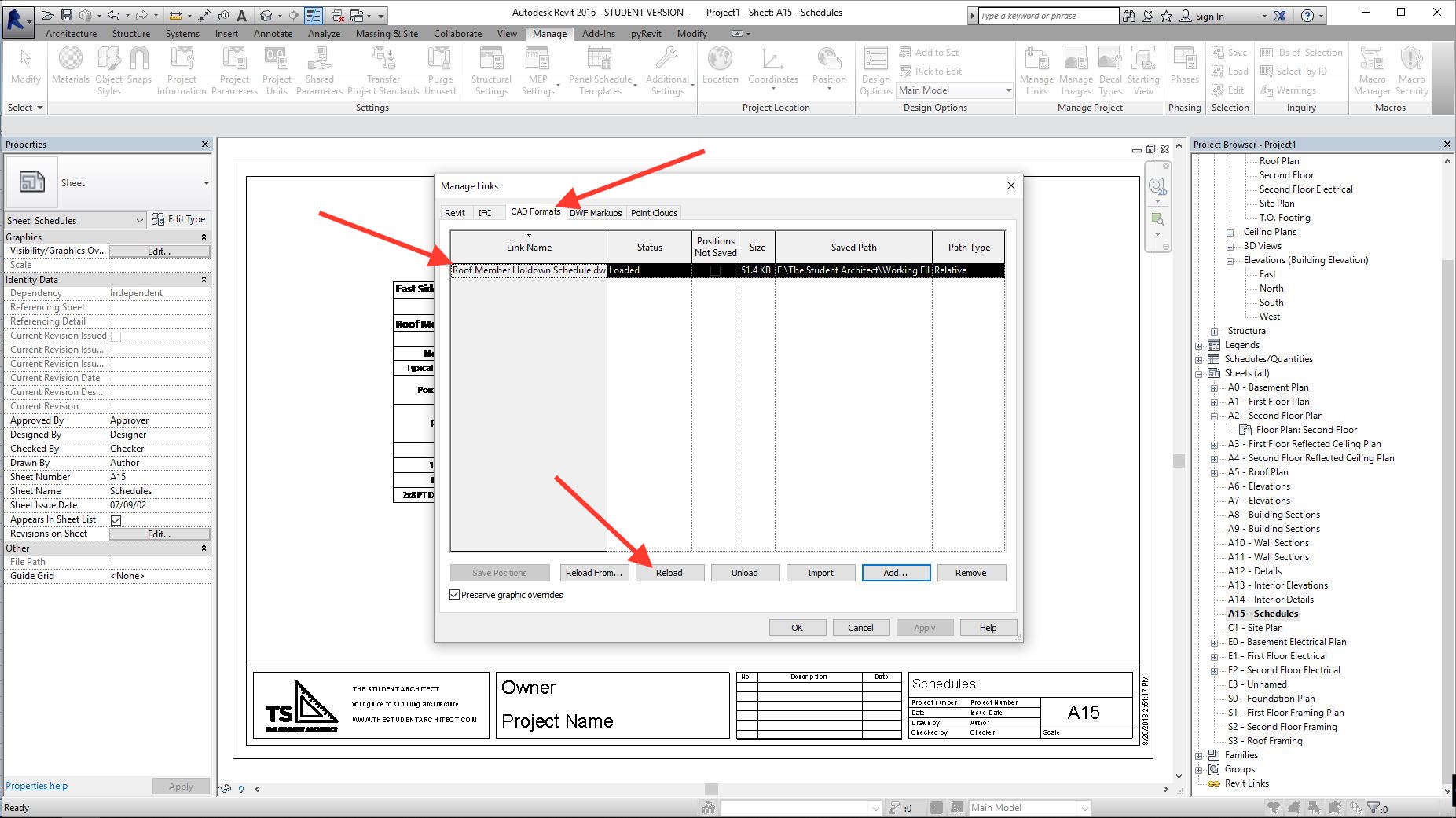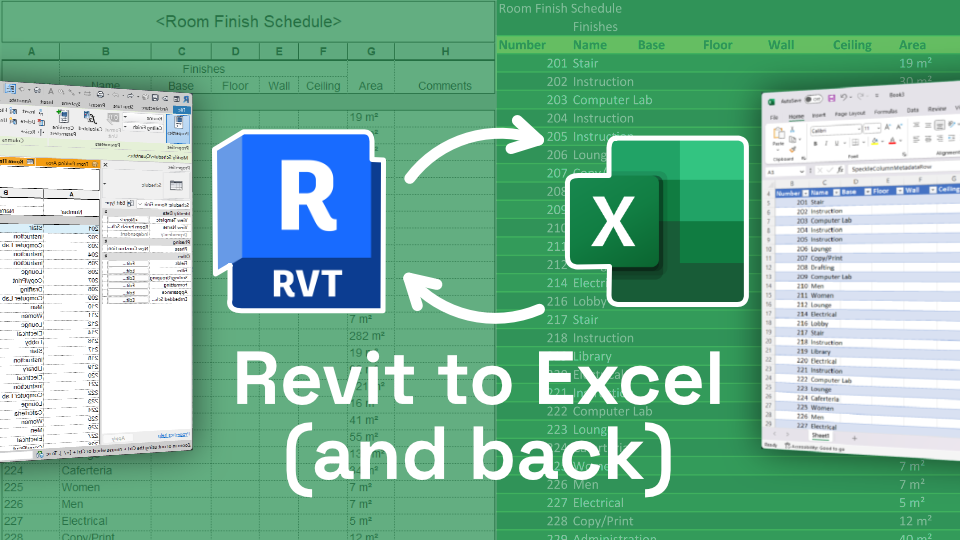Efficiency Satisfies Accuracy: Explore Vital Revit Tools
Wiki Article
Excel Empowerment: Supercharge Your Revit Projects With Seamless Information Import
With seamless data import, Excel empowerment can be the secret to opening your project's full capacity. Picture streamlining the import process and maximizing efficiency via smooth information assimilation. In this write-up, we will share ideas and methods for utilizing Excel in your Revit projects.The Power of Excel in Revit Projects
You can supercharge your Revit projects by taking advantage of the power of Excel for seamless information import. Excel is a flexible device that can significantly improve your process and productivity in Revit (revit plugins). With Excel, you can quickly import and manage big quantities of data, conserving you effort and timeAmong the key advantages of using Excel in Revit is its capability to manage intricate calculations and solutions. You can use Excel to carry out computations on your information, such as generating quantities, calculating prices, or examining efficiency. This can be specifically valuable when collaborating with big jobs that need substantial estimations.

Furthermore, Excel supplies a acquainted and easy to use interface for working with information. You can organize and control your data in a spread sheet format, making it simple to watch and modify. This can be specifically practical when collaborating with others or when you need to make fast modifications to your job information.
Additionally, Excel permits you to conveniently import and export data between Revit and various other software program applications. You can import information from outside sources into Revit, such as material specifications or devices routines, and export information from Revit to Excel for additional evaluation or reporting.
Streamlining Information Import With Excel in Revit
Streamlining information import in Revit becomes simpler when using Excel as a tool. With Excel, you have the power to seamlessly import and take care of large quantities of data in your Revit projects. By utilizing the acquainted user interface and performance of Excel, you can save time and rise effectiveness in your process.One of the key benefits of using Excel for data import in Revit is the capability to easily arrange and manipulate information before importing it right into your job. With Excel's effective functions, such as arranging, filtering system, and formulas, you can quickly clean up and style your data to satisfy the needs of your Revit task.
In addition, Excel permits you to import data from numerous sources, such as databases, spread sheets, or perhaps online applications. This adaptability gives you the liberty to gather information from various systems and combine it into one main location for simple gain access to and management.
Furthermore, Excel gives the option to develop custom layouts for data import in Revit. By producing templates tailored to your project's specific demands, you can ensure uniformity and accuracy in your information import process.
General, using Excel as a device for information import in Revit improves the process and boosts your performance. So why not capitalize on this effective tool and supercharge your Revit jobs with seamless data import using Excel?
Maximizing Efficiency With Seamless Data Integration
Make the most of effectiveness by seamlessly incorporating and taking care of information in your operations. Gone are the days of by hand inputting data into your system, wasting priceless time and sources. With smooth information assimilation, you can improve your processes and supercharge your performance.
Handling data ends up being a wind when you have a smooth combination system in area. You can quickly organize and categorize your information, making it much easier to get and evaluate. Say bye-bye to the days of undergoing limitless spreadsheets for that piece of details you require.

Excel Advice for Revit Projects
With these methods and ideas, you'll be able to effectively manage your Revit jobs making use of Excel. One of the initial points you can do is to utilize Excel's powerful sorting and filtering system functions. This will allow you to quickly organize and assess your task data. For instance, you can sort elements by their names or filter them based upon specific criteria, such as their standing or area. Another helpful feature is the ability to produce formulas in Excel. You can use solutions to calculate amounts, do complex calculations, and also automate particular tasks. This can conserve you a whole lot of time and initiative in your Revit tasks. Furthermore, you can make use of Excel to develop customized design templates for information import and export. By doing this, you can guarantee consistency and precision when revit add ins moving data between Revit and Excel. Last but not least, do not ignore Excel's conditional formatting function. You can use this to highlight particular elements or worths based on certain conditions. This can help you swiftly recognize and deal with any issues or abnormalities in your project information. Generally, understanding these Excel tricks and tips will considerably boost your capacity to take care of and adjust information in your Revit tasks.Using the Excel-Revit Link for Success
To take advantage of your Excel-Revit link, benefit from the ability to effortlessly synchronize and transfer job information. By utilizing this powerful connection, you can supercharge your Revit tasks and enhance your process. With just a couple of simple actions, you can import information from Excel directly right into Revit, saving you time and making sure precision.Among the crucial advantages of the Excel-Revit connection is the capacity to transfer information flawlessly. Whether you are importing routines, room information, and even geometry details, Excel gives a straightforward interface that enables you to organize and control your information prior to importing it into Revit. This means you can quickly upgrade and customize your job details in Excel, and with a couple of clicks, move those adjustments directly right into your Revit version.
Along with transferring data, the Excel-Revit link also permits synchronization. This implies that any kind of changes made in Excel can be immediately updated in Revit, making sure that your task info is constantly as much as day. This synchronization function is especially valuable when dealing with complicated and large projects, as it removes the requirement for manual data access and lowers the risk of errors.
Verdict
By streamlining information import and optimizing effectiveness via seamless information integration, you can supercharge your tasks and achieve success. Do not wait any type of longer, begin using the power of Excel in your Revit jobs today and unlock a world of opportunities.You can supercharge your Revit projects by utilizing the power of Excel for seamless data import. With Excel, you have the power to perfectly import and manage huge amounts of data in your Revit tasks (revit plugins). Overall, understanding these Excel pointers and techniques will significantly improve your capability to take care of and adjust information in your Revit jobs
Whether you are importing schedules, space data, or even geometry info, Excel offers a straightforward user interface that enables you to organize and control your information prior to importing it right into Revit. By improving data import and taking full advantage of performance with seamless data integration, you can supercharge your jobs and attain success.
Report this wiki page